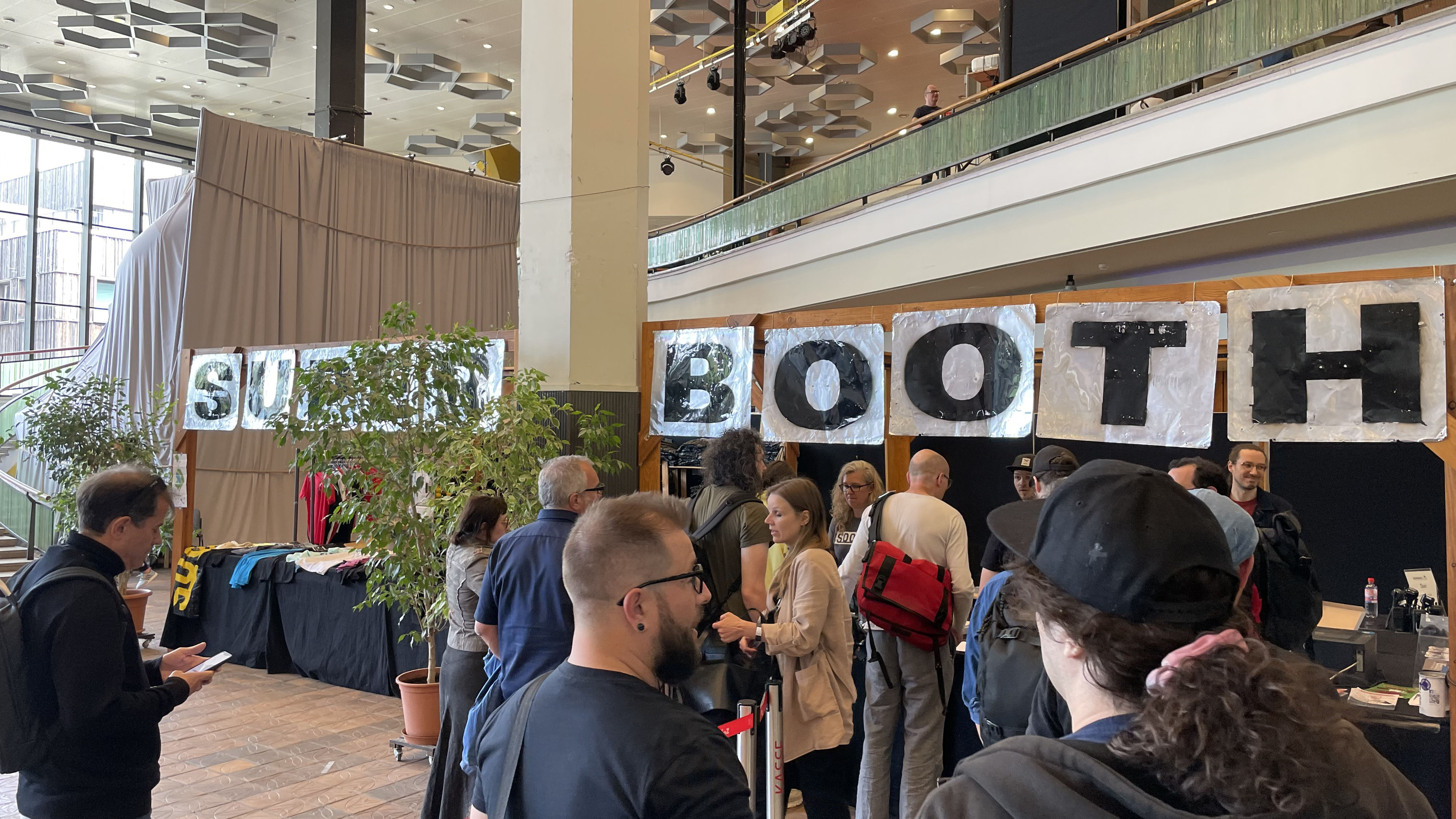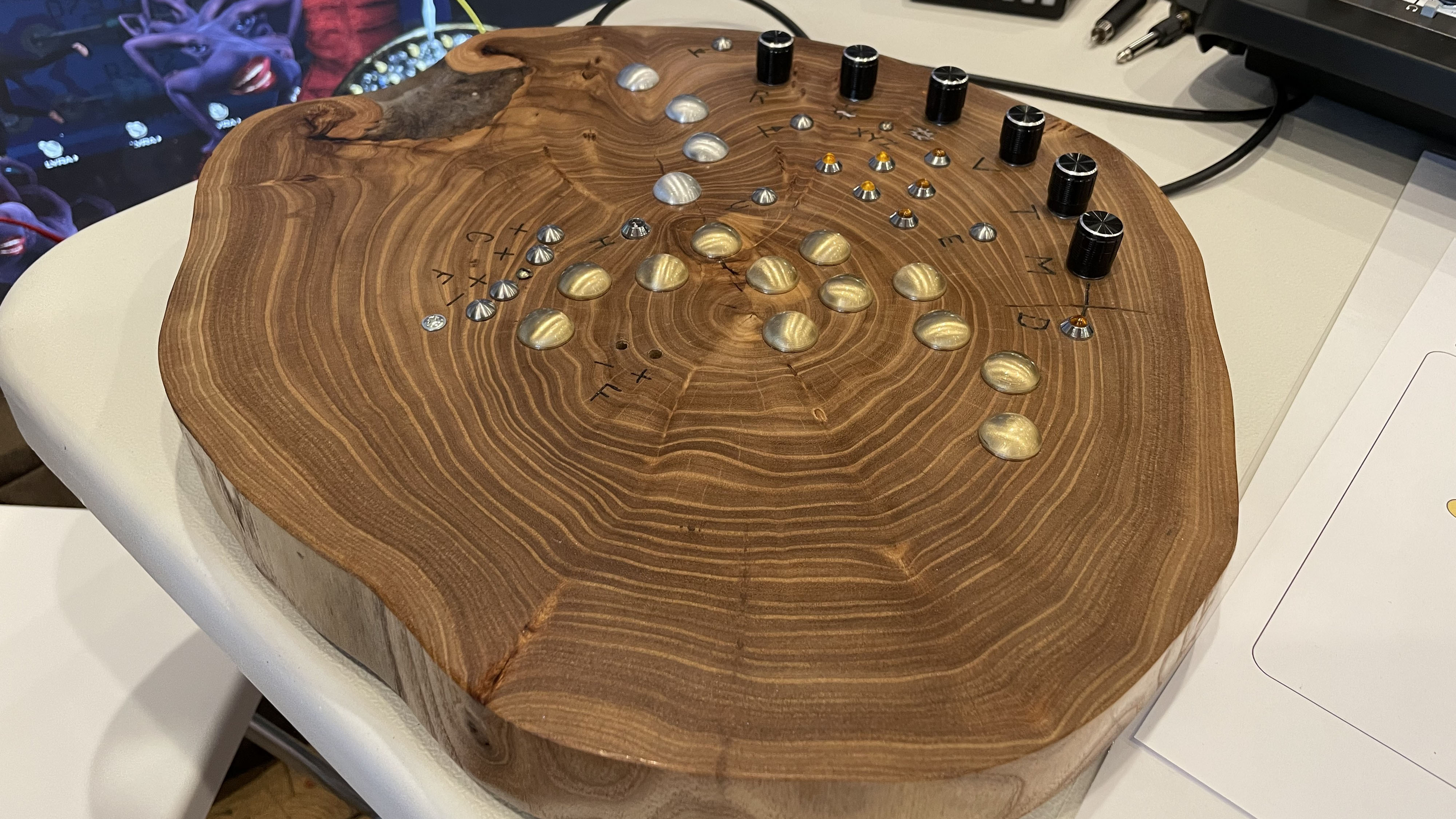Superbooth 2022: the best new synths, grooveboxes, modules and unexpected oddities
We crown our gear highlights from Berlin

SUPERBOOTH 2022: It feels like barely any time has passed since we were last in Berlin’s FEZ centre for Superbooth 2021. Our last trip to the Berlin synth show – now firmly established as Europe's most significant music technology event – is so fresh in our minds that we can still taste the currywurst.
With much of Europe under some form of lockdown for the first half of 2021, last year’s event ended up delayed from its usual pre-summer slot to mid-September. That left us with a wait of only eight months between that last ‘Booth and this one. In fact, such a shortened gap between events, coupled with a sluggish global supply chain, has meant that several of our 2021 highlights are still yet to hit the market as 2022’s show rolled around.
You might think all this would lead to a lack of surprises for 2022, but thankfully the ‘Booth has delivered the goods – and then some. From behemoth synths to inspiring beatmakers, via some serious oddities and – of course – a whole mass of modular. Let’s crown the cream of this year’s offerings...
Best synth: Oberheim OB-X8
The return of Oberheim has been a long time coming. The company announced its re-entry into the synth market earlier this year, after the brand name was returned to founder Tom Oberheim from Behringer back in 2021. We’ve had various teasers and leaks over the weeks since then, but Superbooth finally brought a full reveal of the brand’s comeback instrument – the OB-X8.
Created with input from Sequential’s Dave Smith and Focusrite – who acquired Sequential last year – the OB-X8 takes the best bits of the company’s classic OB-X, OB-Xa and OB-8 instruments and packs them into a new eight-voice analogue synth.
At $5000, the X8 is a top-end synthesizer, but in the flesh it justifies its price tag. The walnut-ends and vintage Oberheim styling comes paired with conveniences brought over from Sequential’s modern lineup, such as full channel aftertouch and a vintage control for dialling in analogue unpredictability. It sounds wonderful too – meaty and rich in the way you expect an OB-branded synth to sound, but with added versatility. A welcome return indeed!

Best groovebox: Polyend Play
Superbooth 2022 has been a good year for beatmakers and grooveboxes. Elektron impressed us with Syntakt – a new addition to the Digitakt/Digitone range that combines digital and analogue drum synthesis. Also in the analogue realm, Dreadbox’s Dysmetria is an exceptionally fun-looking groove synth that comes as a DIY kit and can work in both desktop and Eurorack formats.
Want all the hottest music and gear news, reviews, deals, features and more, direct to your inbox? Sign up here.
Our pick of the bunch, however, is Play, the new MIDI and audio groovebox from Polish developer Polyend. Like the esoteric Tracker before it, Play is an exceptionally creative instrument that invites users to approach their music making in new ways.
Play goes beyond the classic ‘tracks and steps’ format of most sequencers by letting users freely assign, edit and move triggers and automation around its pad-based sequencer grid. Add to that workflow a host of creative chance tools, deep polyrhythmic capabilities, a polyphonic MIDI sequencer and an extensive range of punch-in performance effects, and Play starts to look like a seriously powerful source of inspiration.
Least surprising surprise: Teenage Engineering OP-1 Field
We weren’t expecting the Swedish brand to drop an updated version of its much-loved oddity any time soon, but in retrospect we really should have seen this one coming. The original OP-1 has consistently hovered around the top of retailer Reverb’s rankings of top selling synths over the past few years, and the price of original OP-1s has been steadily climbing on the second hand market. A new OP-1 seems like it should be a no-brainer for Teenage Engineering.
Perhaps the reason we weren’t expecting it is because it’s taken so long – the original dropped all the way back in 2011, so maybe we should be forgiven for having written off the chances of a follow-up by now.
The OP-1 Field is essentially an expanded version of the original. Like its predecessor, this is a compact digital instrument that spans the realms of synth, sampler, multi-track recorder, effect unit and controller – as well as including an FM radio.
Its creators describe this follow-up as being “louder, thinner and 100 times better” – that number referring to the 100 new features that have apparently been added. These include an expanded synth engine, new speaker system and the ability to transmit, as well as receive, radio signals. These upgrades come at a price though, as the OP-1 Field will set you back £1,999 – well over twice the launch price of the original.

Most creative use of a tree stump: SOMA Labs Terra
SOMA Labs is known for its left-of-centre instrument designs, from the ‘organismic’ Lyra synthesizer to the wonderfully unusual Pulsar-23 drum machine. The company’s latest prototype, Terra, is a whole other level though, pushing SOMA's commitment to organic-inspired electronic instruments to its logical extreme.
Terra is an experimental synthesizer that comes built into a large block of wood. The synth itself is polyphonic and microtonal, seemingly lending itself to melodic experimentation and ambient noise. The keyboard is said to have the full key range of a grand piano and the ability to microtune each key within a range of 125 steps per semitone.
There are also a variety of sensors onboard for modulation and expression, including several touch points and a three-axis motion sensor.
Honestly, even having seen it in the flesh we don’t quite understand Terra, but its beguiling sound and look make us excited to get better acquainted in the future.

Best visual reference: Rhodes’ Twin Peaks-inspired booth
It’s fair to say that the Mk8 from revived electric piano brand Rhodes is something of a looker – and the all-black design on show at this year’s Superbooth is a particularly fine specimen. The now UK-based brand get extra points from us though, for having placed it in a booth that gives a visual nod to the menacing Black Lodge from David Lynch’s Twin Peaks, complete with red curtains and jagged, black and white floor.
The moody, jazz-inflected cool of Lynch’s classic series seems like a good match for the vintage-charm of Rhodes’ MK8, in our book. That piano you like is going to come back in style.

Best software: Bitwig Studio 4.3
While there’s been plenty to get excited about at this year’s Superbooth, the software side of things has been a little slow. There’s been little in the way of new plugins or apps launched this year, so competition for the show’s hottest software comes down to a head-to-head between a pair of updates: Bitwig Studio 4.3 and Arturia’s V Collection 9.
Not that you should take that as faint praise; both updates are genuinely impressive in their own right. Arturia’s latest V Collection maintains its crown as the best emulation bundle going, thanks to the addition of an impressively lifelike MS-20. It takes the package into new territory too, with the new, sample-based ‘Augmented’ string and voice instruments.
For our money though, the home team takes the crown. Berlin outfit Bitwig has consistently impressed us with each iteration of its creative, modular-minded DAW. This latest ‘point’ update gives a welcome overhaul to the DAW’s spatial device list, with a new convolution reverb and enhanced delay.
There’s also a host of analogue-inspired new tools for Bitwig’s onboard modular environment The Grid, including new oscillator and filter types. Combined with the versatility of Bitwig’s open and interlinked ecosystem, it promises to make the DAW an even more impressive creative tool.
Best new module: Mystic Circuits IDUM
As ever, Superbooth 2022 was an absolute hive of modular activity, a real patcher’s paradise of new Eurorack gear. So much so, that we’ll be bringing you a separate round-up of this year’s best new modules in the coming days.
If you forced us to pick a winner now though, our impulse vote goes to Mystic Circuits’ excellently-named IDUM, an idiot-proof provider of Aphex or Autechre-level IDM glitchiness.
As its creators say, “Making complex electronic music with the modular usually requires meticulous sequencing done in advance or a large ecosystem of modules. Unfortunately, the level of expertise needed to accomplish this is not accessible to the average modular user.”
While this statement might be rather tongue-in-cheek, it paints a picture of what IDUM is capable of. This is a gate processor and looper capable of quickly adding variations and interest to your patterns. While it’s designed for simplicity, it’s not without depth – there’s plenty in the way of front panel CV control, and it also packs a clock output in order to mess with external sequences.
Modular purists might rage at it, but us below average users are pretty excited.



I'm the Managing Editor of Music Technology at MusicRadar and former Editor-in-Chief of Future Music, Computer Music and Electronic Musician. I've been messing around with music tech in various forms for over two decades. I've also spent the last 10 years forgetting how to play guitar. Find me in the chillout room at raves complaining that it's past my bedtime.
- Simon ArblasterVideo Producer & Reviews Editor
- Matt MullenTech Editor